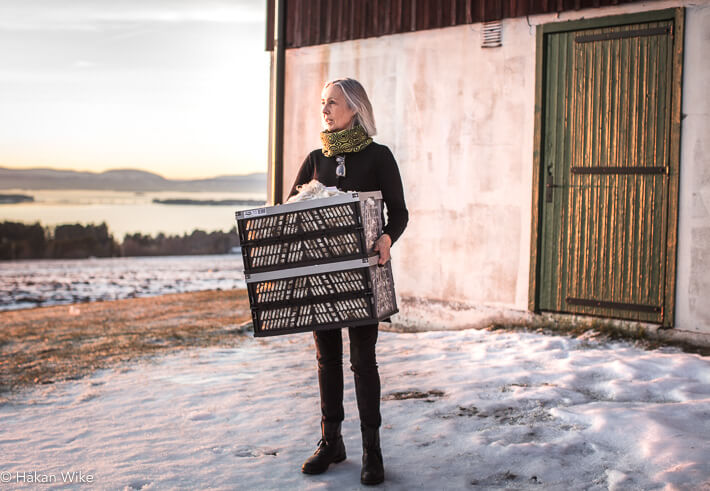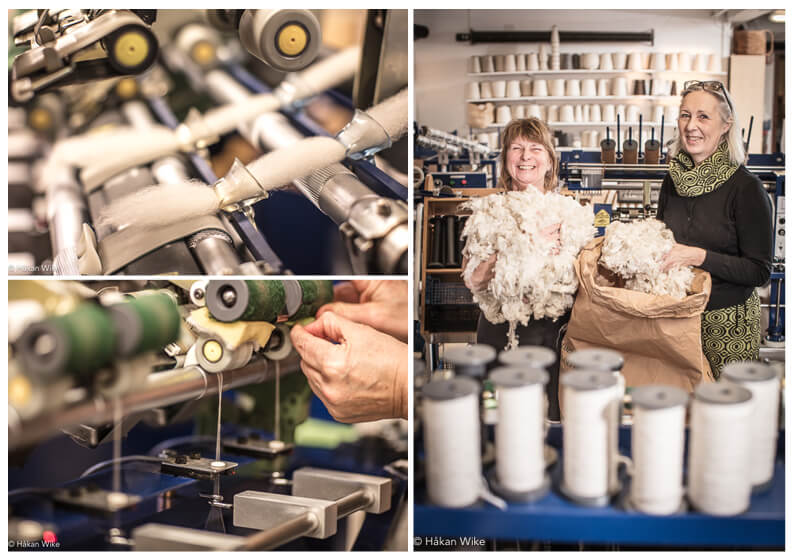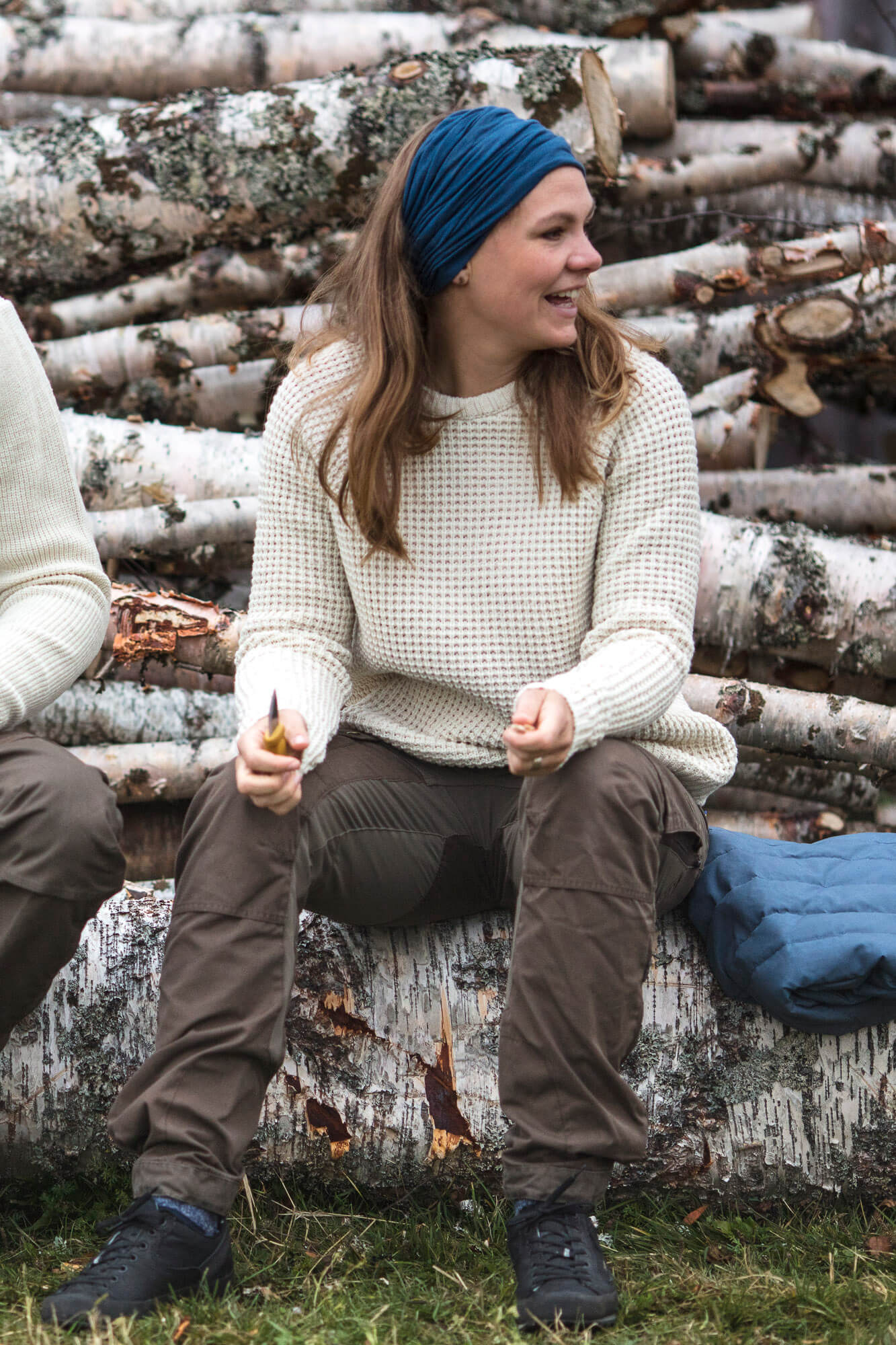Swedish sheep – from sheep to yarn
Bleats are replaced by the clink, clank, clonk of machinery. 100kgs of unwashed Swedish wool from Brattlandsgården farm in Åre is being washed then spun into fine threads of yarn.
We’re at Ullforum, a tiny spinning mill in Jämtland. And we really do mean tiny. There are just two people working in the mill using 10 spinning machines. So even after a 30% loss once it's cleaned, it takes a month to wash all the Fjällräven wool that was sheared in October.

But despite its small size, Ullforum is very thorough, as manager Lena Perrson, explains.
“When the wool arrives we look through it to clear our large particles of dirt like grass. It’s then washed and dried over night before going into the first machine, the ‘picker’ to open up the fibres. Next it’s spread out and spinning oil is applied.” This is a mixture of 20% oil and 80% water that helps remove the static from the wool.

“Then it’s the de-hairer. This sorts the coarser from the finer fibres. Only the finer fibres go through the machine.” The coarse fibres fall out and are collected for later use. Ullforum can use them for creating other types of yarn, predominately for home knitting. So there is very little wastage.
“Next we ‘card’ the wool before it goes onto the draw frame. The draw frame creates a semi-worsted yarn." Carding is the process that intertwines the fibres into a single thread. And worsted yarn is where every fibre lays flat so the yarn in thin. This creates a more even yarn that’s nicer for making sweaters and it's less itchy. It's also more tactile and pliable.
“Finally it goes into the spinning machine. But this process takes a while as we can only spin eight threads at a time.”

The final process is to steam the wool before weaving it onto spools, the kind that go onto weaving or knitting machines. And this entire step-by-step procedure takes a full day. So you can see why we booked up the Ullforum mill for an entire month.
The finished wool, sitting proudly on the spools that are quickly filling the shelves of Ullforum’s store room, looks and feels fantastic. It’s smooth but hasn’t lost any texture. And the weave is fine but not too fine, just thick enough for you to look forward to wrapping up in a warm, snug winter sweater.
“We tested the Brattlands wool when it arrived and it was under 20 microns. Merino is usually around 17-23 mircons, so the Brattlands wool is comparable. But the thing with merino is that it has very little lustre. Brattlands wool, on the other hand, has a lot of lustre. So it's beautiful to work with and it'll make gorgeous sweaters,” says Lena.

All 70kgs of washed wool has now been spun. We’ve not bleached it. So we have a lot of white or creamy coloured wool, quite a bit of grey and a little bit of black. That's it - au naturel. It’s now on its way to the family-run weaver in Borås in southern Sweden to be spun into sweaters.
We were lucky that Ullforum had the capacity to take our wool. And that it’s located an hour away from Brattlandsgården farm. We're also fortunate to be working with Ivanhoe in Borås - a day's drive from Ullforum - as there aren't many Swedish weavers left in Sweden that can handle a production of this size, even though by global standards it's tiny. So far, so good. But the challenges will really come when we decide to scale up this project. Right now our production team along with Sustainability Manager Christiane Dolva can visit every supplier and producer on this pilot project’s supply chain. We can ensure our strict standards are met. That the sheep are happy. That the wool is produced cleanly and sustainably.

“The goal with this project is not to just produce lovely Swedish wool sweaters, but also to establish best practices that we can learn from,” says Christiane. “The hope is to scale the project up. We’re aiming for a business model that works at scale, but by starting small we can learn things that we wouldn’t be able to do on an international level. We know it’s not going to be easy, but it’s a step we want to take.”
Next month, find out more about the design and even get a sneak peak of the final product.
The freedom to move
Designer Elisabet-Elfa takes us through our new Keb Touring and Keb Lite products.
The journey towards perfecting our trousers
It’s not a journey we planning on ending any time soon. Find out how we develop our trousers.
Meet G-1000 Air
A new take on a classic. Our material development team has given G-1000 an airy summer makeover.
